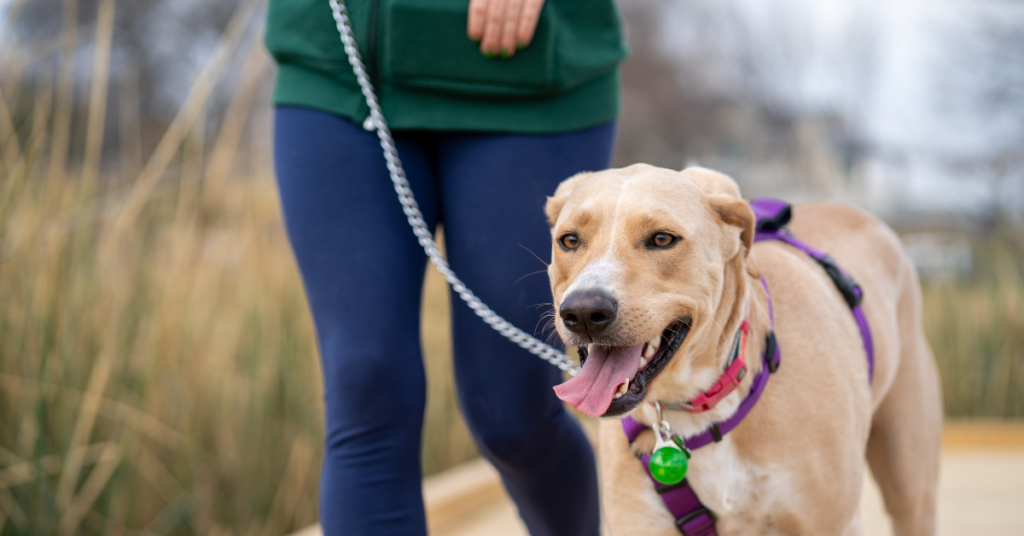Yes, Retractable leashes can be bad because they increase safety risks. The long cord allows dogs to run into traffic, trip people, or tangle around objects. Sudden tension can cause hand burns or injuries, while weak mechanisms may snap under pressure. They reduce control compared to fixed leashes, making them unsafe in busy areas.
What Are Retractable Leashes?
Retractable leashes use a thin cord or tape that extends from a spring‑loaded handle, letting your dog move farther than a fixed leash. They can reach 10–26 feet and lock at a chosen length. Are Retractable Leashes Bad if used right? It’s complicated.
Key parts: plastic grip handle, internal spring, cord or tape, brake/lock button. – Common lengths: 10–16 ft for small dogs; up to 26 ft for larger models. – Big draw: freedom to sniff and roam. – Big risk: less control in fast situations.
Are Retractable Leashes Bad? The Short Answer
Usually yes, because they reduce control and raise injury risk for both dog and handler.
- Good in low‑risk, open areas with excellent recall.
- Risky near traffic, doorways, bikes, kids, or other dogs.
- Risk grows with strong, reactive, or untrained dogs.
- Safer choices exist for daily use.
Risks Backed By Research
Are Retractable Leashes Bad according to evidence? Studies and injury reports point to specific hazards tied to long, thin lines and spring tension.
- Hand injuries: Peer‑reviewed reports describe lacerations, friction burns, and even finger injuries from cords entangling or tightening under load.
- Sudden jerk forces: Research on leash forces shows abrupt stops can spike neck and tracheal stress, especially with collars; longer lines mean faster run‑ups and harder stops.
- Dog fights: Behavior studies note that extra distance at the end of a retractable leash reduces handler control during dog‑dog greetings, increasing conflict risk.
- Startle/traffic events: Case data from emergency and veterinary sources link retractable use to falls, shoulder strains, and near‑miss traffic incidents due to delayed stopping.
- Equipment failure: The farther the extension, the higher the kinetic energy; tapes and cords can snap under unexpected load, documented in product injury reports.
Tip: Are Retractable Leashes Bad if you switch to a front‑clip harness? They’re still risky in crowds, but a harness lowers neck strain if a stop happens.
What’s Good About Them (And For Whom)?
Are Retractable Leashes Bad for every dog? Not always. They can help in very specific cases.
- Sniff walks in quiet fields help relieve stress and meet enrichment needs.
- Small, calm dogs with solid training can enjoy controlled freedom.
- Mobility support for some handlers who benefit from less arm tension.
- Managed decompression walks where you can see 50–100 yards around you.
Safer Everyday Alternatives
Are Retractable Leashes Bad compared with these options? These tools give freedom with fewer surprises.
- 6–8 ft fixed leash: Best control for sidewalks and stores.
- 10–15 ft long line: Great for parks and training recalls; use on a harness.
- Front‑clip harness: Helps reduce pulling and neck pressure.
- Hands‑free waist leash: Keeps your center of gravity steady on runs.
- Double‑handle leash: Quick close control for sudden situations.
If You Still Use One, Do It This Way
Are Retractable Leashes Bad if you follow strict rules? You can lower risk, but not erase it.
- Use a tape style, not a thin cord; tape reduces cutting injuries.
- Clip to a well‑fitted harness, not a neck collar.
- Set a “working length” of 6–8 ft in busy zones; lock it there.
- Keep your thumb ready on the brake; practice fast stops.
- Never use near traffic, bikes, doorways, elevators, or blind corners.
- Avoid dog‑dog greetings on a retractable line.
- Wear grippy shoes; keep the line away from fingers and legs.
- Replace at the first sign of fraying, sticking, or weak springs.
Training Basics That Reduce Risk
Are Retractable Leashes Bad without training? Yes. Simple skills change the game.
- Name response: Dog looks at you when called—reward instantly.
- “This way”: Turn cue to redirect calmly from triggers.
- Loose‑leash walking: Reinforce a slack line with treats.
- Emergency stop: “Wait” at curbs; pay well for compliance.
- Recall foundation: Practice on a 10–15 ft long line in quiet areas.
Data note: Behavior research consistently shows that reinforced recalls and turn cues cut leash tension and conflict events in public spaces.
Common Myths, Debunked
Are Retractable Leashes Bad because they teach pulling? They can, but here’s the nuance.
- “They teach all dogs to pull.” Not always, but variable tension often rewards pulling.
- “They’re fine if my dog is friendly.” Friendly dogs still cause tangles and scares.
- “Locks make them safe in traffic.” Locks can slip; reaction time still lags.
- “Small dogs can’t cause harm.” Small dogs still trigger bikes, people, and other pets.
Buyer’s Checklist For 2025
Are Retractable Leashes Bad if you pick the right build? Better gear helps, but use‑case still matters.
- Choose tape, not cord; look for high‑visibility webbing.
- Get a size rated above your dog’s weight and strength.
- Large, textured brake button for wet hands.
- Swivel clip to reduce twists; double stitching at stress points.
- Reflective tape and a wrist lanyard for night walks.
- Warranty and replaceable parts; avoid no‑name clones.
- Pair with a padded, Y‑front harness to protect the neck.
FAQ’s
Are Retractable Leashes Bad for puppies?
Yes in public areas. Puppies learn by repetition. A retractable’s constant tension rewards pulling. Use a 6 ft leash and a front‑clip harness until solid loose‑leash skills and recall form.
Are Retractable Leashes Bad for reactive dogs?
Usually yes. Extra distance reduces control and increases surprise encounters. Use a fixed leash, front‑clip harness, space‑creating curves, and high‑value treats.
Are Retractable Leashes Bad for running?
They’re a poor fit. The changing length can trip you. Use a hands‑free waist leash with fixed length and shock‑absorbing bungee on open, legal trails.
Can retractable leashes cause injuries?
Yes. Reports include rope burns, finger injuries, falls, and dog neck strain from sudden stops. Tape styles and harnesses lower risk but do not remove it.
Are Retractable Leashes Bad for small dogs?
Small dogs still face neck and trachea risk. If you must use one, clip to a harness and keep it short and locked in busy spaces.
Is there a safe way to let my dog roam?
Use a 10–15 ft long line on a harness in open areas. Practice recall. This gives sniff freedom with better control and less snap force.
Conclusion
Are Retractable Leashes Bad for most daily walks? For busy sidewalks, yes. They reduce control, raise injury risk, and can teach pulling.
With the right setting, a harness, and strict rules, you can lower risk. But fixed leashes and long lines are safer choices for training and everyday life.
Pick the tool that fits your dog, your route, and your skill. Try a long line this week, practice recall, and watch your walks get calmer and safer.
Want more helpful guides? Subscribe, ask a question in the comments, and share what worked for you.
I’ve loved dogs all my life and have cared for many different breeds over the years. Here, I share simple tips, stories, and helpful advice for all dog lovers. Whether you’re a new pet parent or a lifelong dog fan, you’ll find something useful and fun on my site.


